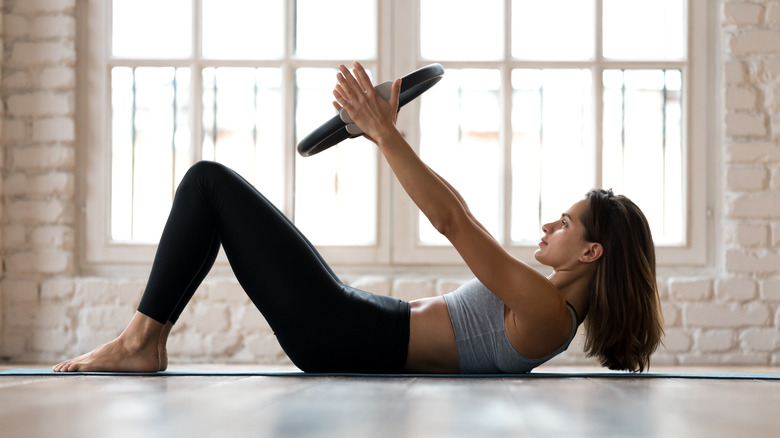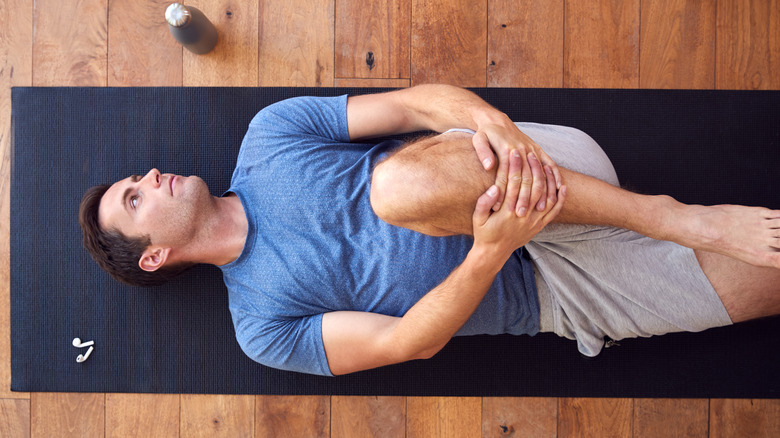The Biggest Core Workout Myth You Need To Stop Believing
Believe it or not, pressing your lower back directly into the floor during core exercises can actually do more harm than good. Also known as imprinting, flattening your back into the mat while doing Pilates or other core workouts is bad for your back and can even lead to injury. According to Complete Pilates, that's because your spine naturally has three curves and is generally strongest when these curves are maintained. Flattening your back and spine can strain the muscles in your lower back and actually prevent you from engaging your core. As it turns out, imprinting can also overwork your hip flexors and glutes, restricting the range of motion in your hips and leading to poor pelvic alignment, which can contribute to bad posture.
That's why you want to have a neutral spine for Pilates and other similar workouts. Well+Good states that neutral spine is the natural position your spine takes without flexing or over-extending your back. Since the natural curve of every person's lower back is different, the exact amount of space between the floor and spine can vary depending on the person. Generally speaking, however, Well+Good suggests that you should be able to place a blueberry in the space under your lower back without squashing it.
How to find your neutral spine
To find your neutral spine position, lie on your back with your knees bent and your feet flat on the floor. According to Verywell Fit, your legs should be parallel to each other, with your arms resting at your sides. Once you're in this basic position, you can let your body relax and allow your back to settle on the floor without making any effort.
Next, breathe in deeply, then exhale as you perform a pelvic tuck, pressing your lower spine into the floor. Inhale again, releasing the tuck. Then as you exhale, lift your lower spine up off of the floor in a pelvic tilt, releasing on another inhale.
As it turns out, neutral spine is somewhere between these two positions (per VeryWell Fit). Your lower abdominal muscles should be flat, while your lower spine should have just a slight curve off the ground. To maintain this position during exercise, however, you'll need to make sure your hips and pelvis don't move, which takes practice.


